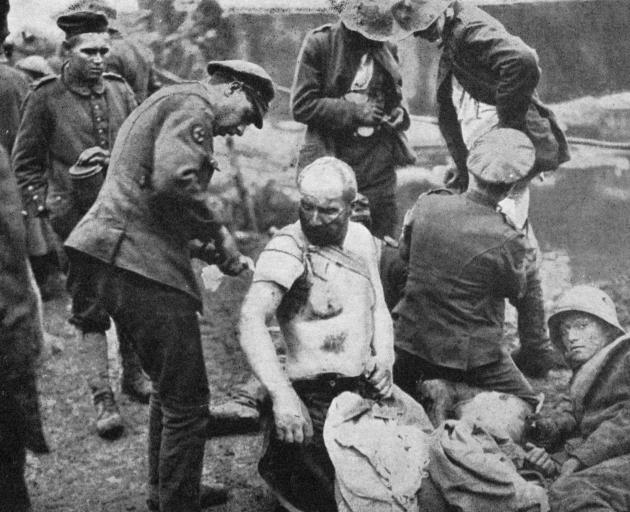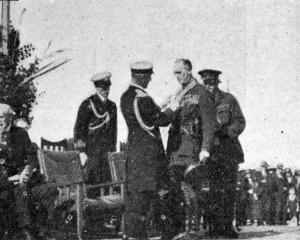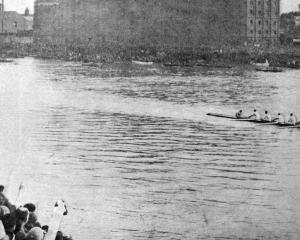
All bright and shiny where the sun glints on the water, No Man's Land looks in the aeroplane photographs. This is the front held by the Belgians and their ancient ally, the floods.
A foot or two below sea-level, it runs from Nieuport-on-the-Sea, a little less than twenty miles south to Dixmude. Up where the Yser loops furthest cast the stagnant waters of No Man's Land - ''the haunts of coot and hern'' - are twenty-five hundred yards wide.
At Dixmude they narrow to a bare twenty-five yards. South of Dixmude, in the British area, the mud of Flanders makes a muck of No Man's Land and a wallow of every attack. Hence the land lies a foot or two above sea-level, rising inland to the merest shoulders of ground.
So the enemy, in many sectors on the Flanders front, until Haig's last victory on the Passchendaele Ridge, still held the positions that were highest and the trenches that were driest. In most of the British ''trenches'' facing them an entrenching tool would strike water a foot below the surface.
Given time, the mud of Flanders sucks slowly down from sight all the human and mechanical debris of the battlefield, leaving a surface broken only by shell-holes, some three feet deep, some ten feet deep, each at least half full of water, and many of them joined so they form lakes big enough to drown men and horses.
Native schools
There are now 110 Native schools with a total attendance of 5000 scholars in New Zealand. It was stated that these schools cost about 35,000 per annum, and, as about 30,000 of this sum was distributed in salaries alone, the speaker could not see how any great saving could be made in the cost of upkeep by transferring the schools, as was proposed to the control of the education boards.
Asbestos roofing
A new product is asbestos cement roofing, designed as a substitute for corrugated iron. Ground asbestos and about six times as much Portland cement are made into paste with water, and this is rolled into sheets on a large revolving drum. Cut to suitable size, the sheets to be corrugated are so pressed that the tops of the corrugations are as strong as the rest. After suitable seasoning, the sheets used for new roofing or repairing are waterproof, fire-proof and unaffected by an acid-charged atmosphere.
- ODT, 11.1.1918.
COPIES OF PICTURE AVAILABLE FROM ODT FRONT OFFICE, LOWER STUART ST, OR WWW.OTAGOIMAGES.CO.NZ












